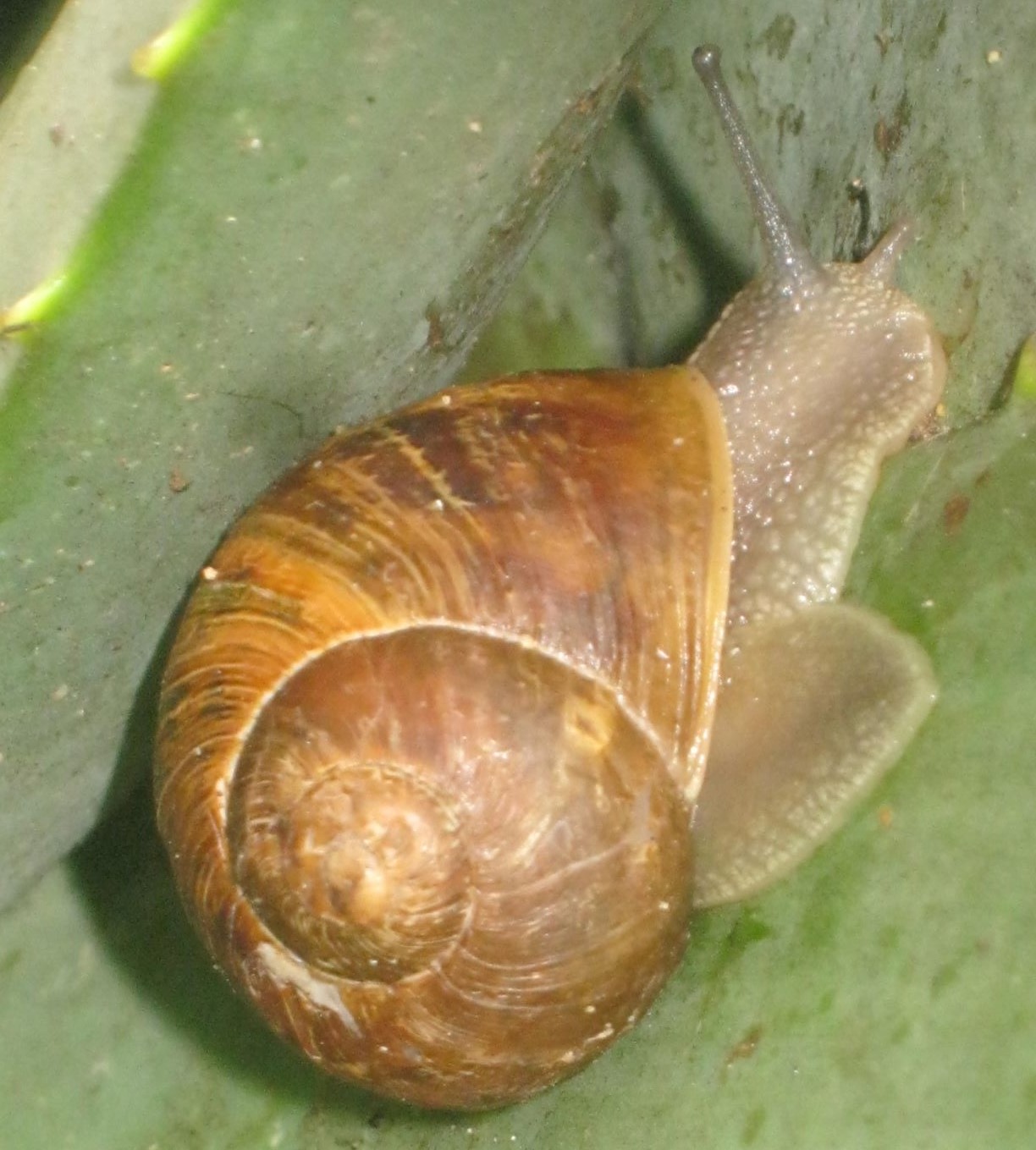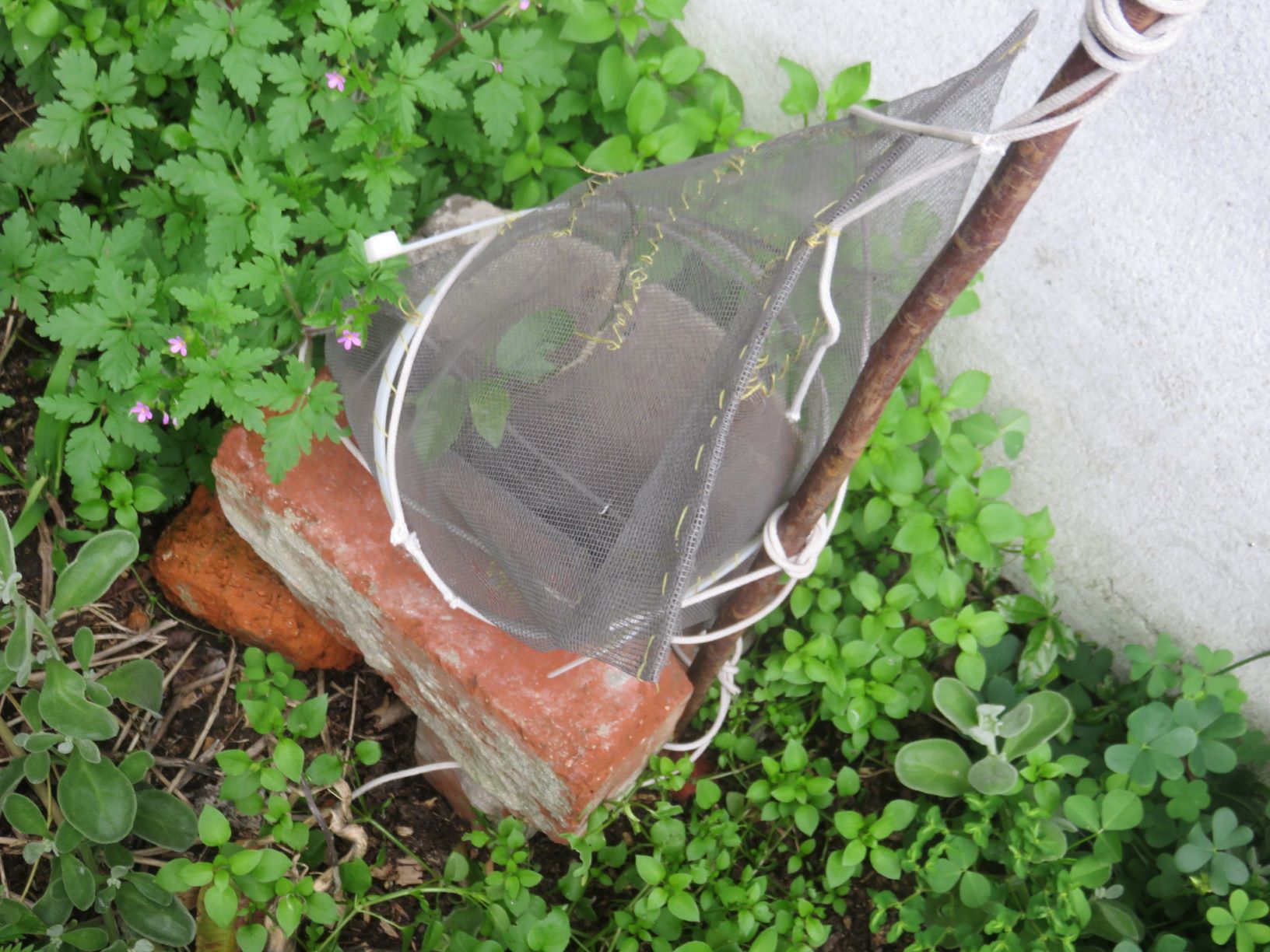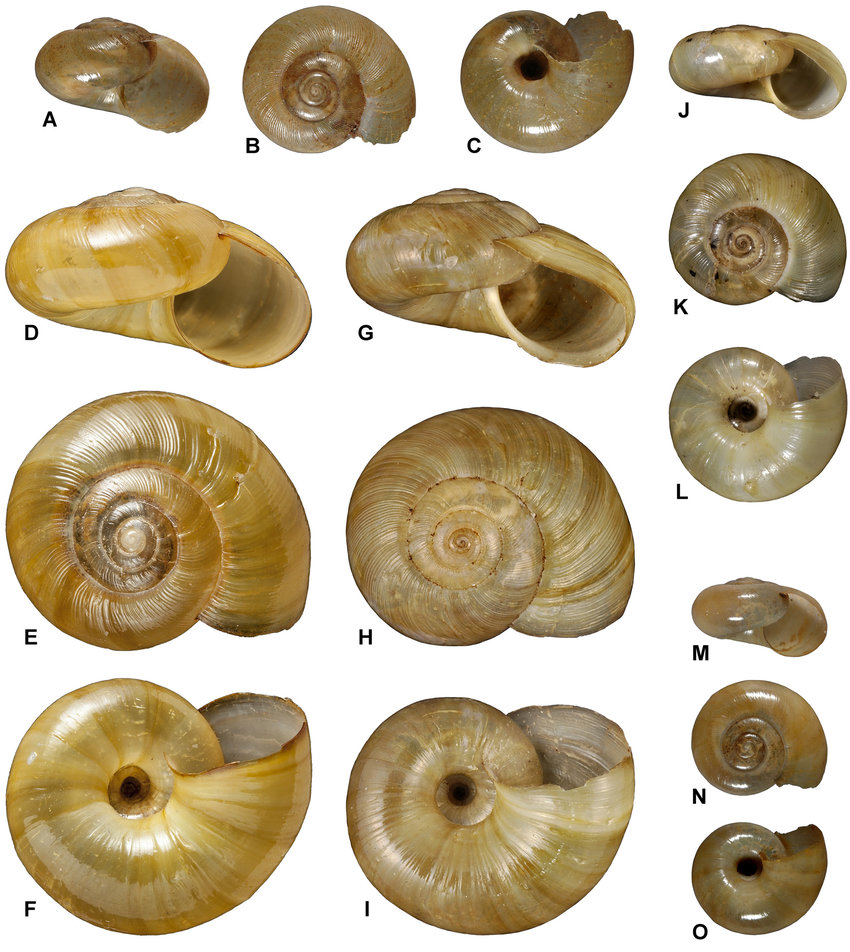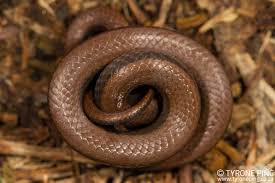Dear Reader, in this age of AI created content, please support with your goodwill someone who works harder to provide the human-made. Sign up at the top of the lefthand column or bottom of this page. You will receive my hand illustrated monthly newsletter RESTORE NATURE and access to the biodiversity garden design course as I write...and nothing else, I respect your time. I am also removing the advertizing as best I can as its become intrusive inappropriate and pays me nothing.
Reduce garden snails by letting nature take care of them
 These garden snails destroy some garden plants: Helix aspersa
These garden snails destroy some garden plants: Helix aspersaA great reference book for IPM, waterwise gardening, increasing the biodiversity of your garden and more.
If you have trouble with garden snails in Cape Town or the Western Cape, I've some good news, and it may also inspire similar actions in other parts of the world. This is knowledge I never had until I stumbled on a lovely book in our local library: Bring Nature back to your Garden by Charles and Julia Botha. It is a book written for South Africans and its really strong on indigenous plants that draw butterflies. It has a useful 53 page set of plant lists at the back detailing our plants under various functions including human food, and drought resistance, and a 12 page list of caterpillar to plant relationships, which are often quite specific. They appear to have written on other regions of South Africa too. Its a fabulous resource. I will write more on the butterflies in another article. What was really illuminating for me was their information on snails.
 Last resort against garden snails devouring my hand raised grenadilla vines
Last resort against garden snails devouring my hand raised grenadilla vinesThe lost war against garden snails
Like most Capetonians I've struggled with snails eating my green vegetables, my tender young grenadilla vines and more in the rainy growing season. We've hunted them, we've trapped them with fermenting fruit and beer, we feed them to the fish, we've even thought of eating them, and we've frozen them. But we never seem to achieve the low population that is desired. When it rains, armies of snails crawl up our house walls eating the paint, but mostly they are never seen, as they forage at night. Only the destruction they wreak is in evidence. I did do something effective, but its an intensive thing not applicable on a large scale. I made a sock of fly screen gauze to protect my grenadilla vines. You can see the progress on this facebook post. It is working again, for the second time. The first vine recovered and is flourishing. I'll post visual proof below.
Vegan's I know what I do to snails is bad, but now we will never have to do this again. No gardener need ever kill a snail again, and should still be able to enjoy their greens, if the theory in this book bears out in the garden.
 Nearly a year later, the vine which had all its leaves stripped is thriving
Nearly a year later, the vine which had all its leaves stripped is thrivingA natural solution to the problem (and its been lurking in my garden for a long time)
The Botha's book spoke of different
kinds of snails and herein lies the solution. There are alien imports
which have really taken over, like Helix aspersa, which is
large and vegetarian (the European garden snail pictured at the top of this page. It is edible) and there are small
local herbivorous snails too, but there are also native carnivorous
snails. If you just let your herbivore snail population get large
enough, the carnivores will arrive, like lions on the Serengeti, and
help to bring down the snail population. Only patience is required
and indigenous snails will come to your rescue ! You can carry on the tradition of Attenborough.
 Natalina schaerfiae, a friend to Cape Town gardeners.
Natalina schaerfiae, a friend to Cape Town gardeners.solution: know and appreciate
your garden snails
The mistake I've been making is to get rid of all the snails, when I saw them, and especially to dispose of the carnivores, as I mistakenly believed all snails to be herbivores. What a bull in a china-shop I was, destroying the natural ecology that was trying to reestablish itself and help me. Its a profound lesson. We don't have to be cruel and we don't have to interfere too much. And a plague of snails is a blessing from nature, because it will lure the solution to your garden.
 Nata dumeticola, another ally
Nata dumeticola, another allyIntroducing:
Your friends the garden snails
The snails that eat other snails will be found everywhere in the world, I'm sure. In this region they are Nata dumeticola, found from Saldanaha Bay south, and Nata vernicosa, which is wide spread, even in the Karoo desert. Their shells are flatter than Helix, slightly yellower and have a clear round hole, or umbilicus at the bottom. Then there is Natalina schaerfiae which occurs between the mountains and the sea. The genus Natalina is an ancient Gondwana genus, so there may be other carnivorous snails of this genus in other continents. It is very secretive, and about the size of a five rand coin. These snails do not breed as fast as Helix aspersa, but they will follow where the population of Helix gets high and tips the balance. When the population of carnivores gets high and the herbivores are reduced, you can give some of the carnivores to your friends ! This is not only socially rewarding but ecologically sensible, because without enough herbivores as food the carnivores will start to eat each other.
 Nata vernicosa, another carnivorous snail
Nata vernicosa, another carnivorous snailI've taken pictures off google images, so that you can identify the good snails, and will replace them with my own pictures, if and when I see the creatures, and have a decent photograph for identification. These are actually photographs of the type specimens. I hope the photographers will understand the ecological purpose of this. I couldn't find their names or accreditation details on the photographs and would be glad to credit the photographers, or remove pictures.
In the many months since writing this article, I have seen only a couple of Natalina schaerfiae, but the appearance of Nata vernicosa is very familiar to me, from decades back in the garden of my childhood. What could have happened ? N. schaerfiae used to be seen in much greater numbers especially in sandy wilder areas. It is possible that snail poisons and changing landscape use have slowly reduced their numbers almost to extinction, but this is just a suspicion. Insect diversity is plummeting worldwide, why not snail diversity ?
A much maligned helper
 Duberria lutrix also eats snails and slugs
Duberria lutrix also eats snails and slugsThere is another indigenous helper in the war against snails, a small snake harmless to humans called the slug eater, of Duberria lutrix varieties found throughout sub Saharan Africa. The description in the book is not enough for identification, except that it rolls up into a ball when alarmed. The wiki pictures show a khaki colored snake half finger thickness.
 This is why its called a 'tabakrolletjie'
This is why its called a 'tabakrolletjie'------
home page for abundant links to pages on natural gardening and restoration
------
garden pests: learning to manage them and live with your tiny garden helpers
Restore Nature Newsletter
I've been writing for four years now and I would love to hear from you
Please let me know if you have any questions, comments or stories to share on gardening, permaculture, regenerative agriculture, food forests, natural gardening, do nothing gardening, observations about pests and diseases, foraging, dealing with and using weeds constructively, composting and going offgrid.
SEARCH
Order the Kindle E-book for the SPECIAL PRICE of only
Prices valid till 30.09.2023
Recent Articles
-
garden for life is a blog about saving the earth one garden at a time
Apr 18, 25 01:18 PM
The garden for life blog has short articles on gardening for biodiversity with native plants and regenerating soil for climate amelioration and nutritious food -
Cape Flats Sand Fynbos, Cape Town's most endangered native vegetation!
Apr 18, 25 10:36 AM
Cape Flats Sand Fynbos, a vegetation type found in the super diverse Cape Fynbos region is threatened by Cape Town's urban development and invasive alien plants -
Geography Research Task
Jan 31, 25 11:37 PM
To whom it may concern My name is Tanyaradzwa Madziwa and I am a matric student at Springfield Convent School. As part of our geography syllabus for this
"How to start a profitable worm business on a shoestring budget
Order a printed copy from "Amazon" at the SPECIAL PRICE of only
or a digital version from the "Kindle" store at the SPECIAL PRICE of only
Prices valid till 30.09.2023







